Join a powerful, unprecedented alliance for better eye health for all.
Join IAPB-
Choose an alternate language here
Awareness raising is a long-term approach to enable communities to practice good health seeking behavior. In this comprehensive eye care project, various activities have been developed to raise awareness of eye health and blindness prevention in communities.
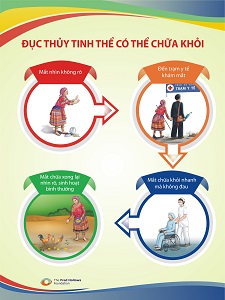
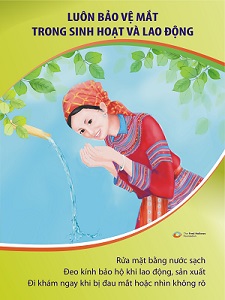
In mountainous areas like Lam Dong and Dak Nong, health staff and patients seldom meet. With different minority groups, language is another barrier. Suitable forms of health promotion have been utilized including radio and television broadcasting and local partners will continue to be involved in material development including for e.g. culturally appropriate content and which local dialects to use.
Moreover, broadcasting eye health messages on radio and television and big billboards at public places are an effective channel to transfer information and knowledge in these areas.
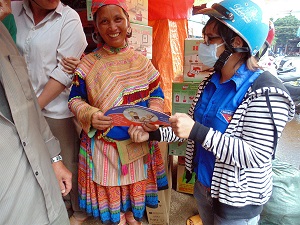
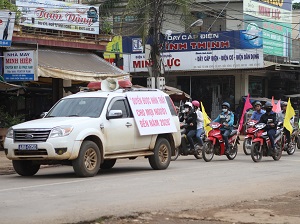
For students, school-based activities on child eye health are always encouraged. School talks by eye doctors, eye health contests, provision of simplified visual acuity charts and promotion material are included as activities in annual partnership agreements.
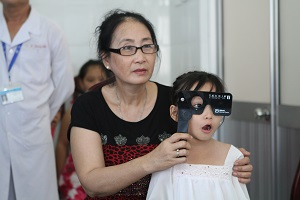 |
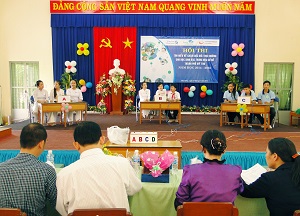 |
| Double-sided panel in a school-yard in Vinh Long | Eye health contest for students in Tien Giang |
In the delta regions like Tien Giang and Vinh Long, big billboards and banners built at public places are good ways to help people familiarise themselves with eye care services. Nevertheless, focus-group discussions where local people are counselled and screened for eyes diseases are most popular. In each discussion, post-operated patients are invited to talk and describe the progress of their surgery. Such word-of-mouth methods have an invisible strength that can encourage people to feel comfortable to travel to eye centers for checks and treatment where necessary.
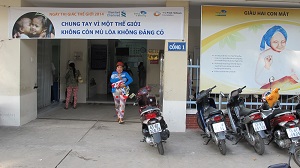 |
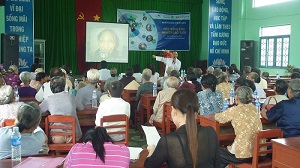 |
| Banner and billboard at Tien Giang Eye Hospital | Focus-group discussion in Vinh Long |
The result of a regular survey which was undertaken by eye patients in four project provinces in October 2014, showed that the most common communication channels enabling patients to access the eye services were television (17%), radio (25%), CHWs and Village Health Volunteers (9%), and other patients (12%). The remaining 37% of patients were already aware. The survey findings demonstrated that each communication channel has an effect to improve community awareness of eye health and blindness prevention and the most effective channels need to be focused, dependent on the community and context.
However, close cooperation is required among stakeholders, such as Department of Education and Training and Department of Health, unions of elderly and women, community eye care network of trained CHWs and VHWs all combined with constant efforts of ophthalmic staff in organising effective and sustainable communications and providing quality eye care services. By doing so, patients and communities will have effective behavioural change towards their eye health and blindness prevention.
The Fred Hollows Foundation Vietnam Office and local project management boards would like to express thanks to SCB SiB and local bank staff for their continued support to reducing avoidable blindness in Vietnam.

Senior Project Officer, Fred Hollows Foundation, Vietnam
[email protected]